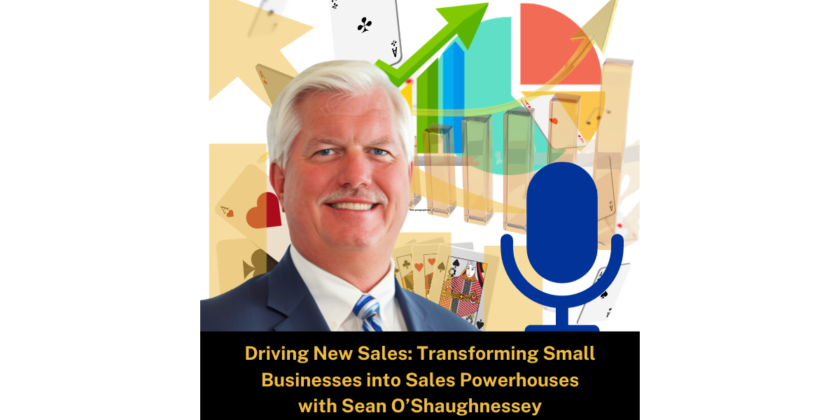
Welcome to “Driving New Sales: Transforming Small Businesses into Sales Powerhouses,” the essential podcast for B2B sales professionals, managers, and CEOs of companies aiming for revenue growth. In today’s episode, we’re diving into the core of any thriving sales organization: the Sales Process Flowchart. Guided by Sean O’Shaughnessey, a veteran in sales strategy, we’ll explore how to craft and refine your sales process for peak efficiency and effectiveness.
Our esteemed sponsor, Kevin Lawson of Lighthouse Sales Advisors and Sales Xceleration, is our sponsor for this episode. Kevin offers unparalleled sales leadership solutions for small businesses, focusing on navigating sales growth challenges and scaling up operations through his extensive experience. Kevin’s fractional consultancy is the answer for those looking for expert guidance in sales team development without the commitment of a full-time executive.
Contact Kevin:
Email: Kevin@lighthousesalesadvisors.com
LinkedIn: linkedin.com/in/kwlawson
Key Topics Discussed
- Blueprint of Success: Discover the importance of having a well-defined Sales Process Flowchart as your guide through the sales journey.
- Stages of the Sales Process: Sean breaks down each stage of the sales process, from prospecting to nurturing long-term relationships.
- Customizing Your Sales Approach: Learn the significance of tailoring your sales process to fit your unique business model and industry requirements.
- Visualizing the Sales Funnel: An exploration of how visualizing your sales funnel can identify potential leaks and optimize the sales journey.
- Leveraging Technology: Insight into how automation tools and CRM systems can enhance your sales process and free up your team to focus on selling.
- The Dynamic Nature of Sales Processes: Emphasizing the importance of continuous feedback and adaptation to keep your sales process relevant and effective.
Key Quotes
- “Success doesn’t come from random acts of effort. It requires a blueprint, a master plan that orchestrates every step of the sales journey.”
- “Imagine your Sales Process Flowchart as the architectural plan for a skyscraper. Without it, you’re merely stacking bricks without knowing how high they should go.”
- “Technology is the wind beneath our sales team’s wings, freeing them up to do what they do best—sell.”
Additional Resources
- Sales Management Association Study: Highlights the performance impact of using a formal sales process.
- Harvard Business Review Study: Shows a significant revenue increase for businesses with a standardized sales process.
Action Items You Can Do Today
- Develop a Visual Sales Process Flowchart: Start with a simple outline and refine it to suit your team’s needs.
- Solicit Feedback from Your Sales Team: Use their frontline insights to improve your sales process.
- Customize Your Approach: Ensure your sales stages align with your business model for increased efficiency.
- Invest in Training and Technology: Equip your team with the necessary knowledge and tools to excel.
- Embrace Continuous Improvement: Regularly update your sales process based on feedback and changing market conditions.
Today’s episode with Sean O’Shaughnessey has armed you with the knowledge to construct a Sales Process Flowchart that is the backbone of a successful sales strategy. Implementing the discussed actionable strategies will refine your sales process, making it a powerful engine for business growth. Stay tuned for more insightful episodes to further empower your journey to becoming a sales powerhouse.
Contact Information
- Sean O’Shaughnessey: Email – Sean@NewSales.Expert
For more expert advice on transforming your sales strategies, don’t forget to subscribe to “Driving New Sales: Transforming Small Businesses into Sales Powerhouses.” Join us next time for another deep dive into the strategies that can elevate your sales game. Until then, keep selling smart and forging meaningful connections with your customers.

The key to success in today’s changing business landscape is continually improving your sales strategies. As someone who has worked as a VP of Sales, I have personally witnessed the transformative impact of honed sales methodologies and comprehensive product knowledge. This year, it is crucial that we shift our focus and elevate our approach.
The Power of Product Knowledge: Your Ultimate Sales Advantage
One frequently underestimated aspect is having in-depth knowledge about your products or services. It’s not about being aware of what you offer; it’s about truly understanding what makes your offering unique and valuable to your customers. Regular training sessions dedicated to product knowledge should be a part of our schedule. We need every member of our sales team to be able to articulate the features and benefits of our products confidently.
Preparation breeds confidence. Sales leadership should client scenarios and engage in role-playing during sales meetings to enhance your team’s skills further.
Also, take the time to create a product FAQ that can be used as a quick reference guide. Equipping everyone, not just your sales team, with the necessary knowledge to effectively handle customer conversations is essential.
While buyers hold significance in the purchasing process, it’s essential to consider decision-makers who may extend beyond buyers. Customize your conversations to engage and influence these individuals. This involves understanding their needs and how your product offers unique solutions.
Over the next two weeks, I encourage you and your team to explore and discuss two new features of our product. By integrating these features into your sales narratives, you can enhance the depth and relevance of your client interactions.
Finally, incorporate client success stories into your sales pitches. Each feature, benefit, and capability of our product should be supported by real-life examples that resonate with our clients on a level.
I invite you to dive into these strategies in my latest video resource. The second video of this series is linked below. This video (and the others in the series) goes beyond being a guide; it explores achieving sales mastery in the new year and beyond. Begin today. Make this year your most successful yet!

Welcome to a new episode of “Driving New Sales: Transforming Small Businesses into Sales Powerhouses.” Today’s discussion, led by Sean O’Shaughnessey, focuses on market segmentation and its pivotal role in enhancing sales strategies for small and medium-sized businesses. This episode is sponsored by Kevin Lawson of Lighthouse Sales Advisors and Sales Xceleration, offering seasoned sales leadership solutions for small businesses.
Key Topics Discussed
- Understanding Market Segmentation: Sean dives into the essence of market segmentation, likening it to the precision and personalization of a master tailor.
- The ‘MASA’ Criteria for Effective Segmentation: Explore the Measurable, Accessible, Substantial, and Actionable elements that form the foundation of successful market segmentation.
- High-Value vs. Low-Value Customer Segments: Learn to differentiate and prioritize segments based on value, focusing resources on the most profitable groups.
- Tailoring Offerings to Customer Needs: The significance of customizing products and services to meet the unique requirements of each target segment.
- Applying Geographic, Demographic, and Psychographic Segmentation in B2B Sales: Insights into using these segmentation strategies to effectively identify and target potential business clients.
- Leveraging Data Analytics and Market Research: Utilize data-driven approaches for informed segmentation and proactive market strategy adjustments.
Key Quotes
“Market segmentation is not just about splitting your market into groups; it’s about recognizing and catering to your customers’ unique needs and preferences.”
“High-value customers usually offer higher margins and are more likely to be repeat purchasers, potentially even advocating for your brand.”
“Regular reviews and adjustments to your segmentation strategy are crucial to maintain its effectiveness and relevance in the ever-evolving marketplace.”
Our Sponsor
Thank you to Kevin Lawson of Lighthouse Sales Advisors and Sales Xceleration for sponsoring today’s podcast. Kevin is a sales leadership solution provider for small businesses. Kevin helps business owners navigate the potential pitfalls around sales growth, sales turnaround, or scaling up by leveraging sales acumen and his decades of experience to build effective sales teams.
Kevin Lawson of Lighthouse Sales Advisors can be reached at kevin@lighthousesalesadvisors.com and https://www.linkedin.com/in/kwlawson/
Action Items You Can Do Today
- Segment Your Customer Base: Classify customers into high, medium, and low-value segments based on purchase history, interaction frequency, and service costs.
- Determine Customer Lifetime Value: Use data analytics to calculate the lifetime value of each customer segment and prioritize accordingly.
- Develop Specialized Marketing and Sales Campaigns: Craft targeted strategies for each segment, primarily focusing on high-value customers to maximize revenue.
- Regularly Review and Update Your Segmentation Strategy: Stay attuned to market changes and adjust your segmentation approach to ensure continued relevance and effectiveness.
Thank you for tuning into “Driving New Sales: Transforming Small Businesses into Sales Powerhouses.” In this episode, Sean O’Shaughnessey has provided valuable insights into market segmentation, demonstrating its critical role in a successful sales strategy. Implement these actionable steps and witness a transformative impact on your business. Stay subscribed for more insightful episodes exploring practical strategies to drive new sales and enhance your company’s growth.
Contact Information
Sean O’Shaughnessey: Sean@NewSales.Expert
www.NewSales.Expert

Welcome to the latest episode of “Driving New Sales: Transforming Small Businesses into Sales Powerhouses,” where we dive into the critical aspects of B2B sales. Today, Sean O’Shaughnessey, a seasoned consultant in sales organization enhancement, sheds light on the importance of staying updated with client news and updates. This episode is proudly sponsored by “Two Tall Guys Talking Sales,” a podcast by Sean O’Shaughnessey and Kevin Lawson focusing on boosting sales management and methodologies.
Key Topics Discussed
- The Power of Staying Attuned to Client’s Business World: Sean discusses the significance of being proactive and informed about clients’ activities and how this approach transforms sales teams into strategic forces in B2B sales.
- Practical Tools and Strategies for Monitoring Client Updates: Explore the utility of Google Alerts and the role of social media in gaining insights into clients’ strategic moves.
- Interpreting Client News as Opportunities: Understanding how to read between the lines of client announcements and news for potential sales opportunities.
- Context and Timing in Sales Outreach: The importance of timing your sales outreach to align with clients’ immediate needs or strategic goals.
- Leveraging Analytics and CRM for Comprehensive Understanding: How to use analytics and CRM software to analyze client data and market trends for a more informed sales strategy.
- Aligning Monitoring Efforts with Sales Objectives: Ensuring all gathered information is strategically used to drive sales goals.
Key Quotes
- “Staying informed about your clients’ activities is not just advantageous; it’s essential.”
- “Google Alerts is a straightforward yet powerful tool… It’s about maximizing efficiency and staying one step ahead.”
- “Data and tools are only as effective as the strategy behind them.”
Additional Resources
- Two Tall Guys Talking Sales Podcast
- Google Alerts Setup and Usage Guide
- CRM Software Options and Utilization
Action Items You Can Do Today
- Set Up Advanced Google Alerts: Tailor your alerts with specific queries for each client to filter the most relevant information.
- Actively Engage on Social Media: Monitor and engage with your clients’ social media activities to build relationships and gather insights.
- Analyze Client Structural Changes: Stay informed about your clients’ mergers, expansions, or layoffs and adapt your sales strategies accordingly.
- Conduct In-Depth Report Analysis: Regularly review clients’ quarterly and annual reports to tailor your sales approach effectively.
- Perfect Your Outreach Timing: Use your insights to determine the best timing for your sales approach, making it as impactful as possible.
Conclusion
In today’s episode, Sean O’Shaughnessey has provided invaluable insights into how monitoring client news and updates can revolutionize your sales strategy. Remember, successful sales are not just about the transaction; they are about offering timely, relevant solutions that align with the client’s current state and needs. Stay tuned for more episodes to continue transforming your business into a sales powerhouse.
Sponsor
“Two Tall Guys Talking Sales,” where Sean O’Shaughnessey and Kevin Lawson discuss a single sales topic.
Kevin and Sean together have about 60 years of experience in professional selling. This podcast helps people in sales, sales leadership, and business leadership or company owners realize the maximum value of their company by improving their revenue generation capability. This podcast is designed to help those people enhance their companies’ sales management practices, methodologies, processes, teams, and messaging.
Sean O’Shaughnessey and Kevin Lawson are Fractional Vice Presidents of Sales. They operate their own companies separately but have partnered for this podcast to advise salespeople and SMB companies on successful strategies and methodologies.
Kevin is the CEO of Lighthouse Sales Advisors. Lighthouse Sales Advisors is a sales leadership solution provider for small businesses. Lighthouse helps business owners navigate the potential pitfalls around sales growth, sales turnaround, or scaling up by leveraging sales acumen and decades of experience to build effective sales teams. https://www.lighthousesalesadvisors.com/
Sean is the CEO of New Sales Expert. He helps company owners realize the maximum value of their company by improving their revenue generation capability. He helps owners enhance their sales management, methodologies, processes, teams, and messaging.
Contact Sean
You can learn more about Sean O’Shaughnessey at www.NewSales.Expert. You can drop him an email at Sean@NewSales.Expert. You can connect with Sean on LinkedIn at https://www.linkedin.com/in/soshaughnessey/
Discover how to stay ahead in the competitive world of B2B sales with Sean O’Shaughnessey’s expert insights. This episode of “Driving New Sales” is an essential listen for any sales professional, manager, or small business CEO looking to elevate their sales strategy and stay attuned to their clients’ evolving business world. Tune in now for strategies that will transform your approach to sales!
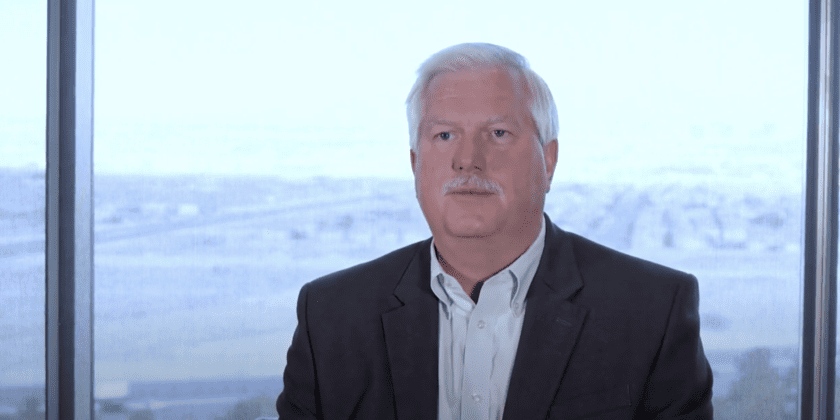
My mission is to bridge the expertise gap that hinders many companies from scaling their operations to the desired heights. The core issue often resides within the sales sector of these organizations, and this is where my expertise becomes a game changer.
Understanding the Challenge
Many company owners, be they founders or inheritors of the business, come to a crucial realization at some juncture in their entrepreneurial journey. Despite their prowess in product development, manufacturing, or service provision, they identify a glaring deficiency in their sales acumen. This inadequacy, unfortunately, bars them from propelling their companies to the next level of revenue generation and market share acquisition. The earnest attempts they might have made to rectify this situation often end in futility due to a lack of specialized knowledge in sales. Hence, they seek external expertise to resolve this bottleneck.
Affordable Expertise
A common concern among these business owners is the affordability of engaging a sales expert. While it’s true that the investment required for a full-time engagement may seem steep, my services are offered on a fractional basis, making them a viable option for many. The value of having a seasoned professional revamp your sales operations far outweighs the cost.
Creating a Self-Sufficient Sales Operation
With a wealth of 38 years of experience, I step into your organization to set up a robust sales team, instill effective sales methodologies, and fine-tune the messaging to resonate with your target market. By doing so, I lay a solid foundation for your sales team to thrive long after my engagement concludes. The emphasis is on creating a self-sufficient sales apparatus that continues to deliver results, allowing me to transition to aiding other businesses facing similar challenges.
Actionable Advice
- Evaluate your current sales operations to identify areas of improvement.
- Consider the value of engaging an external sales expert on a fractional basis to address these areas.
- Ensure the transition plan post-engagement is straightforward, enabling your sales team to sustain the improvements.
Reflect on these steps and envision the transformation your sales operations could undergo with the right expertise steering the helm. The goal is to achieve a state of self-sufficiency in your sales operations that guarantees sustained revenue growth, thereby unlocking the full potential of your enterprise.
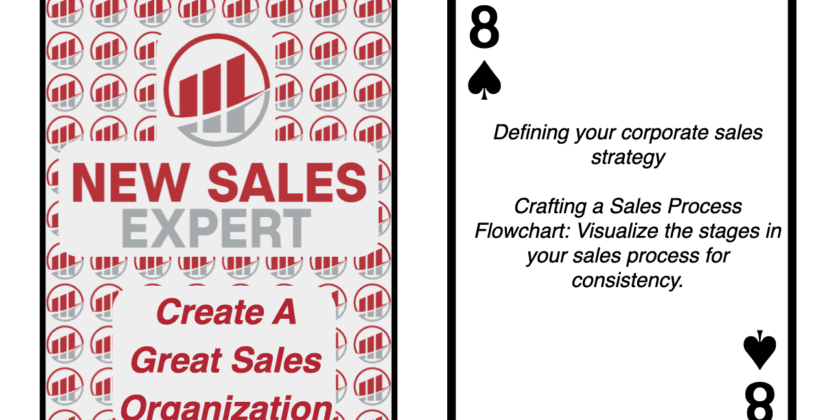
The Quintessential Blueprint for Sales Mastery
In architecture, the blueprint guides turn an imagined design into a tangible, functional building. Similarly, a Sales Process Flowchart is the foundational structure upon which sales organizations can build scalable, consistent, and successful strategies. The importance of this tool lies in its ability to crystallize the sales process into a series of actionable steps, thereby providing a roadmap to success. The goal is to achieve consistency, predictability, and scalability, key tenets that enable sales organizations to meet and surpass their revenue targets.
Navigating the Symphony of Sales
Imagine a scenario where each musician in an orchestra independently chooses the tune, pitch, or timing, neglecting the conductor’s directions. The result would undoubtedly be a chaotic cacophony rather than a mellifluous melody. The outcome is no different in a sales organization devoid of structured processes. There would be discord, confusion, and, ultimately, a waste of valuable resources, tarnishing the reputation of the organization. It’s crucial to set the stage with a meticulously designed Sales Process Flowchart, which acts as the conductor, harmonizing the orchestra of sales activities to create a seamless and pleasant experience for both the sales team and the clients.
More Than Just a Visual Representation
One might argue that a flowchart is simply a visual representation—useful but not essential. However, this understates its pivotal role in an organization. A Sales Process Flowchart serves as a multi-faceted instrument, similar to a map charting the course of a river from its source to the ocean. By meticulously documenting each bend, stream, and tributary, one gains understanding and control over its flow. Such a flowchart aids in:
- Standardization: By laying out a common framework, the flowchart minimizes ambiguities, ensuring that all team members are aligned in their objectives and strategies.
- Efficiency: When every stage and step is defined, sales representatives can navigate the selling process faster and with more agility, thereby accelerating the sales cycle.
- Training and Onboarding: For newcomers to the team, the flowchart acts as a quick reference guide, enabling a quicker path to becoming a productive member of the sales force.
Crafting the Masterpiece: Methodological Precision
The development of a Sales Process Flowchart is neither arbitrary nor superficial; it is a blend of art and science. The task begins with identifying key stages in your sales process, such as lead generation, qualification, and closing deals. Each stage must be broken down into actionable components like a skilled craftsman chiseling away at a block of marble to reveal the sculpture within.
Next, these stages are sequenced in a way that makes logical sense. While the sales process can sometimes be iterative, a primary, repeatable pathway is essential for the sake of uniformity. Feedback mechanisms are integrated at crucial junctures to glean insights for continuous improvement. Remember, the flowchart isn’t a static document; it’s a dynamic blueprint that should evolve with market trends, customer preferences, and organizational changes.
The Endgame: Achieving Clarity and Consistency
The ultimate goal of implementing a Sales Process Flowchart is achieving clarity and ensuring consistency. In an age where most buying experiences are shaped by how customers feel they are being treated, consistency is not merely a bonus—it’s a requirement. The flowchart levels the playing field, ensuring that each customer experiences the same quality of service, irrespective of the sales representative they interact with.
Additionally, for the sales team, the benefit is immense. When the fog of ambiguity is lifted, sales professionals can execute their tasks with a well-defined sense of direction, equipped with measurable benchmarks and a clear vision.
Key Takeaways
For sales leaders aiming to elevate their teams to new heights, neglecting the role of a Sales Process Flowchart is not an option. This tool is instrumental in transforming sales strategies into actionable steps, thereby setting the stage for success. Ask yourself, does your organization have a Sales Process Flowchart? If not, it’s time to draw the blueprint for a harmonious, efficient, and wildly successful sales symphony.
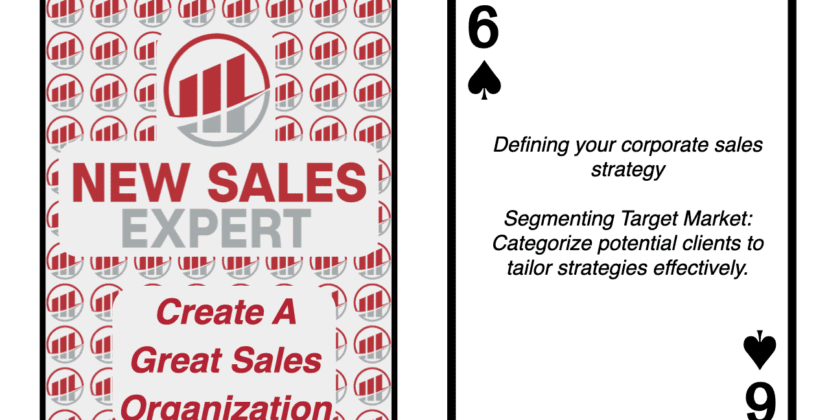
The Art of Tailoring Sales: Why Market Segmentation Matters
Embark with me on a journey across the sprawling business landscape, an expanse echoing with the cacophony of countless potential clients. As vast as this sounds, CEOs and sales leaders quickly recognize a fundamental truth: their offerings aren’t for everyone, no matter how exceptional. The cost of gaining any customer, regardless of that prospect’s business, location, or specialty, risks the profitability of selling to them all. This realization is where the art and science of market segmentation come into play. This approach, akin to a seasoned sailor charting a course through diverse waters, ensures businesses traverse the right seas, leading them toward unparalleled prosperity.
In the realm of business, imagine a master tailor. He meets diverse clients daily, each with their preferences, sizes, and desires. A one-size-fits-all suit? It’s a fantasy. Instead, he meticulously measures, understands individual tastes and crafts a suit that fits impeccably. This artistry mirrors market segmentation, where businesses dissect the extensive market into specific sections, ensuring their strategies align seamlessly, much like that well-fitted suit. The effectiveness of such an approach isn’t theoretical. Historical data unveils a striking revelation: 75% of B2B firms grew their market share if they managed to personalize their sales and marketing directly to the individual customer. This isn’t merely a figure but a testament to the monumental influence of aligning offerings with distinct market needs.
However, as we dive deeper, the waters of segmentation aren’t always placid. Over-segmentation can be treacherous, dispersing focus like a ship trying to anchor at numerous ports, eventually reaching none. Furthermore, a mere segmentation without an accurate understanding can mislead, like mistaking a looming storm for a serene day at sea.
So, how do businesses chart this course effectively?
- Establishing the Pillars of Segmentation: The segmentation can hinge on varying criteria, be it demographic nuances, behavioral patterns, or geographical distinctions. A tech solution catering to bustling urban enterprises would understandably differ from one aimed at serene, rural family-owned businesses.
- Deep Dive into Data: The depth of knowledge determines the journey’s success. Harness data analytics to grasp the intricacies of each segment, echoing a sailor studying sea charts before setting sail.
- Strategic Customization: With a sound understanding of your most profitable customers, mold your sales strategies, ensuring they resonate with each segment’s unique aspirations and needs.
- Embrace Adaptability: The seas of business are ever-evolving. Thus, gather feedback and recalibrate strategies, ensuring alignment with the shifting dynamics.
However, segmentation’s influence isn’t confined merely to optimizing sales. This tailored approach weaves deeper customer relationships. Clients perceive this customized attention, feeling valued and inevitably gravitating towards businesses that reflect their specific needs. Furthermore, this clarity in approach empowers sales teams. Each pitch, each dialogue is infused with purpose and precision. The approach transitions from casting expansive nets in hope to that of expert fishermen, with each cast deliberate and confident.
Market segmentation unfurls as a harmonious blend of art and science. This orchestration is about understanding, tailoring, and fostering profound connections. The outcome for CEOs and sales maestros mastering this realm isn’t mere sales acceleration. It’s about sculpting experiences, nurturing relationships, and consistently delivering unparalleled value.
As the contours of sales constantly change, segmentation emerges as an enduring beacon. It accentuates a profound understanding, recognizing who truly holds value and optimizing strategies to serve them immaculately. In the intricate mosaic of sales, segmentation assures that every piece, every shade, and every nuance aligns impeccably, weaving a saga of sustained growth and success.

I hope you enjoy my August Newsletter
Published: Tue, 08/15/23
|
Sean O’Shaughnessey
CEO and President
New Sales Expert LLC
[email protected]
513.348.8700
6561 Bluegrass Way
Mason OH 45040
US
Unsubscribe | Change Subscriber Options

Bob Robinson, Jr., and his mechanical-engineer father, Bob Robinson, Sr., came up with the idea for a product the world truly needed 25 years ago: a “no-touch” restroom cleaning machine. Their company, Kaivac, is a Hamilton, OH-based manufacturer of cleaning machines. Hamilton is a suburb of Cincinnati, OH.

“We were on our hands and knees, crawling around the bathroom,” recalls Bob, Jr. “It was disgusting. We said, ‘There’s got to be a better way.'”
Through hard work and dedication, the Robinsons created the KaiVac to help solve that initial problem in public restrooms. Over the years, they grew the idea to create dedicated machines to clean kitchen floors, hallway floors, and grocery displays. Beyond its bathroom cleaning technology, it has expanded into floor cleaning and spill response machines and has 18 patents with 16 pending.
Along with growing their manufacturing capabilities, they also grew their sales capabilities. They adopted a hybrid strategy of selling through distribution and selling directly to key customers. Their direct team, under the leadership of Bob Robinson, Jr., who had taken on the role of VP of Sales, closed many enviable customers with massive deals, including Walmart, Kroger, and Target.
They realized that they needed to step up their sales professionalism after having a down year during COVID after having a record-breaking year the year before. They wanted to grow to $75 million in annual revenue within three years and a Big Hairy Audacious Goal (BHAG) of $1 billion in annual revenue within 20 years.
Bob Jr. says Kaivac is just getting started. “At 20 to 25 years in business, you’re at an inflection point where you’ve got resources, tenure, and history and have been through ‘adolescence,'” he says. “Now is the chance to build a professionalized organization.”
They contacted New Sales Expert LLC as the nation was coming out of the global pandemic, but before all the supply chain problems had paused. New Sales Expert LLC is a fractional vice president of sales consultancy. Sean O’Shaughnessey, the CEO of New Sales Expert, is aligned with SalesXceleration and has 38 years of experience in sales and sales management.
According to Sean, “Kaivac is a joy to work with. They are the shining star of Hamilton, OH, and Butler County. They had so much raw potential when I walked in the door; all I had to do was to focus their energy and enthusiasm on working smarter and just a little harder.”
Building an organization with a heart

Kaivac had a great culture to build on to make a great sales culture. Before Sean showed up, the company leadership had already developed their One-Page Strategic Plan and their “Why?” statement that reflects the owners’ Christian faith: “To glorify God by using KAIVAC as an instrument for Good.”
In addition to the “Why?” statement, they had drafted an acronym called FIGS that conveys the “heart” of the company. FIGS—which appears on signs that hang on the factory floor and in break rooms—stands for
- F: “First shall be last, last shall be first.”
- I: Integrity—as in “The truth shall set you free.”
- G: Golden Rule—meaning “treat others how you want to be treated.”
- S: Servant’s Heart, as in “We are in a race to help people.”
The company uses the first three letters of its name–KAI–to inspire the team’s thinking and actions. These letters stand for inspiring phrases such as: “Keep At It,” “Keep Always Improving,” “Keep Attempting the Impossible,” and “(creates) Kick-Ass Inventions.”
Prioritizing net income and growth
Sean’s first change was to make a compensation plan that motivated the sales team to sell bigger deals and to sell them quickly. Kaivac implemented a 50/50 plan in concert with defined territories to keep the Key Account salespeople focused on the goal of more significant and profitable orders.
After the motivation component was in place, it was time to help the team learn how to sell big deals more repeatedly. The big deals of the past had been challenging to work on and, while very profitable, had been disruptive to close. Sean encouraged the company to read John McMahon’s book, “The Qualified Sales Leader,” and with that tome as inspiration, quickly deployed MEDDPICCC to help them qualify deals.
MEDDPICCC by itself is not enough. The company had already licensed Salesforce, one of the highest-rated CRMs on the market, but Sean put MEDDPICCC into the various stages of the sales process to ensure that the salespeople knew all the required information about a big deal. Sean also created dashboards within Salesforce to track deal progress at the management level. The company implemented Sales Plans for Key Accounts and the Power Matrix to document the most influential people in the customer’s decision-making process.
The very first big deals that the company found after Sean started to help them also benefited from the Decision Timeline. The Decision Timeline is a tool to allow the sales team to walk through the entire decision-making process of the customer to understand all of the steps required to make a significant investment decision. It allowed frank and honest conversations to take place with the prospect as the team worked to close the largest deal in the company’s history to date.
Time to run on their own
As with most of the assignments with New Sales Expert, LLC, the goal is to allow the company to run independently. Bob Robinson Jr. was the company’s VP of Sales. Still, he needed to shed those responsibilities to help run the entire company. To finish the transition, Bob and three of his leaders took SalesXceleration‘s Certified Sales Leadership course delivered by Sean O’Shaughnessey.
The Certified Sales Leader (CSL) designation is the country’s most comprehensive sales leadership certification program offered. CSL leadership training and certification will prepare you with the analytical, tactical, and strategic sales management skills needed to drive revenue growth now…and into the future. CSL training expands the skill set of a Sales Manager by providing coaching, techniques, and tools to lead a successful sales team.
All four Kaivac leaders passed the CSL test. One of them, Mike Perazzo, was tagged to take over as Executive Vice President of Sales. According to Mike, “Sean is a master coach for helping shape sales process and methodology. Following his methods will help grow sales faster, transactionally, and strategically. Often a couple of pieces of the puzzle are missing, and Sean helps quickly identify them.
You have everything to gain by having Sean look at your current approach. He is a change agent and disruptive to the status quo. Pushing the pace and flow of deals is his sweet spot. I am a better sales leader because of my time with him.”

Sean O’Shaughnessey of New Sales Expert, LLC states, “Kaivac is a wonderful company. They have created a line of machines that gives pride to the workers in one of the toughest jobs in America – keeping things clean. They are focused on the success of their customers and their employees. They had all of the raw skills within their sales team to be a great sales organization; they only needed me to focus them on activities and techniques that allowed them to close bigger deals faster and at a higher profit level.”
“If anyone works in a clean building with clean restrooms and hard surface floors, they are either cleaning it with Kaivac technology or paying too much for that cleanliness,” Sean explains.
Revenue and profitability have grown since Sean helped Kaivac develop a higher level of sales professionalism. Recent results have shown a dramatic increase in revenue and profitability. The sales and revenue growth have allowed the entire family of Kaivac to prosper. The Robinsons have always considered their employees an extension of their family. The company’s prosperity is passed along to team members through a bonus structure for the whole company. It all fits into the spirit of Kaivac. Bob Jr. says, “Our organization was built to have heart.”
If you want to learn more about Kaivac, you can head to their website at www.Kaivac.com. You should also check out this video: The Story of Kaivac. Kaivac is on its way to outer space on revenue growth, and everyone should check out their entertaining Q3 kickoff video about the growth of Kaivac.
To learn more about Fractional Sales Management and how it can help your company, go to www.NewSales.Expert.


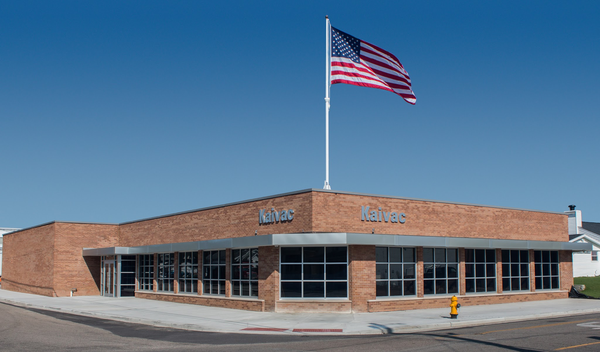
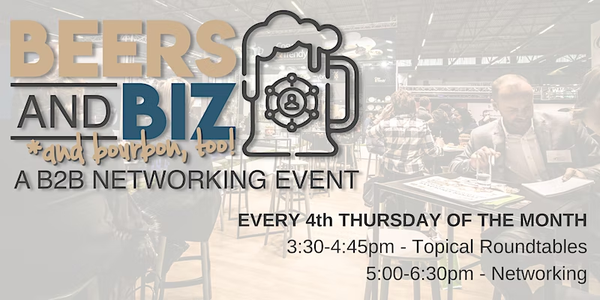




You must be logged in to post a comment.